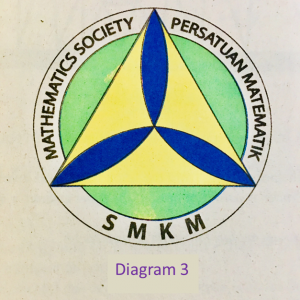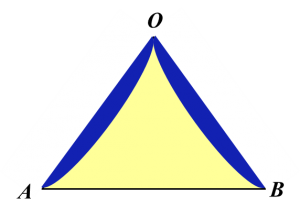Question 9 (7 marks):
Mathematics Society of SMK Mulia organized a competition to design a logo for the society.

Diagram shows the circular logo designed by Adrian. The three blue coloured regions are congruent. It is given that the perimeter of the blue coloured region is 20π cm.
[Use π = 3.142]
Find
(a) the radius, in cm, of the logo to the nearest integer,
(b) the area, in cm2, of the yellow coloured region.
Solution:
(a)
(b)

Mathematics Society of SMK Mulia organized a competition to design a logo for the society.

Diagram shows the circular logo designed by Adrian. The three blue coloured regions are congruent. It is given that the perimeter of the blue coloured region is 20π cm.
[Use π = 3.142]
Find
(a) the radius, in cm, of the logo to the nearest integer,
(b) the area, in cm2, of the yellow coloured region.
Solution:
(a)
(b)


 Diagram
Diagram



 It is given the mean is 950 cm3 and the variance is 256 cm6. If the percentage of the volume more than V is 30.5%, find
It is given the mean is 950 cm3 and the variance is 256 cm6. If the percentage of the volume more than V is 30.5%, find